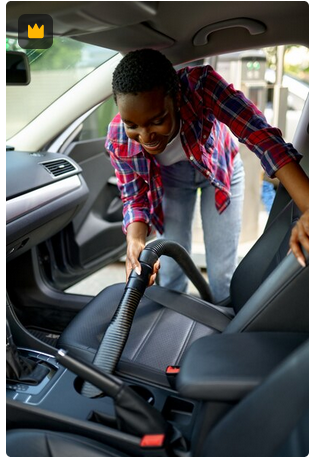Introduction
Properly adjusted headlights are essential for safe driving, ensuring visibility in low-light conditions and preventing blinding other drivers on the road. Adjusting your car’s headlights may seem like a daunting task, but with the right knowledge and tools, you can easily accomplish this important maintenance task on your own.
1. Gather the Necessary Tools
Before you begin adjusting your car’s headlights, make sure you have the following tools handy:
- A screwdriver (usually Phillips or Torx) to adjust the headlight screws
- Masking tape to mark the reference lines
- A measuring tape or ruler
- A level surface to park your car on
2. Find a Suitable Location
To properly adjust your car’s headlights, you need a level surface where you can park your car and a vertical wall or garage door as a reference point. This will help you accurately assess the alignment and aim of your headlights. Choose a location with minimal ambient light to get the best results.
3. Prepare Your Car
Before you start adjusting your headlights, ensure that your car is in the following state:
- The tires are properly inflated
- The gas tank is at least half full
- The vehicle is parked on a level surface, facing the wall
- The headlights are turned on, and if applicable, set to their regular mode (not high beams or fog lights)
4. Locate the Headlight Adjustment Screws
Open the hood of your car and locate the headlight housing. You should find two adjustment screws near the headlight assembly. One screw controls the vertical aim, while the other adjusts the horizontal alignment. These screws are typically labeled or color-coded for easier identification.
5. Mark the Reference Lines
Using masking tape, mark two horizontal and two vertical lines on the wall or garage door, intersecting at a center point. The vertical lines should be centered on each headlight, while the horizontal lines should be at the same height as your headlights. This will serve as a reference point during the adjustment process.
6. Adjust the Vertical Aim
Start by adjusting the vertical aim of your headlights. Locate the vertical adjustment screw and turn it clockwise or counterclockwise to raise or lower the beam respectively. Use the reference lines you marked earlier to align the beam with the desired height. Typically, the beam should be slightly lower on the passenger side to prevent blinding oncoming drivers.
7. Adjust the Horizontal Alignment
Next, focus on the horizontal alignment of your headlights. Locate the horizontal adjustment screw and turn it to the left or right to adjust the beam’s direction. Align the headlight beam with the corresponding reference line on the wall, ensuring that both headlights are parallel and symmetrically positioned.
8. Check and Test Your Headlights
Once you’ve made the necessary adjustments, step back and visually inspect the alignment and aim of your headlights. Take a short test drive to ensure the lights are illuminating the road properly without blinding oncoming drivers. If needed, make further adjustments until you achieve optimal visibility and safety.
9. Consider Professional Assistance
If you find it challenging to adjust your car’s headlights or you’re unsure about the accuracy of your adjustments, it’s always a good idea to seek professional assistance. An experienced mechanic or auto service center will have the expertise and specialized equipment to properly align your headlights.
Conclusion
Properly adjusting your car’s headlights is crucial for your safety and the safety of others on the road. With the right tools, knowledge, and attention to detail, you can successfully align and aim your headlights to ensure optimal visibility and minimize the risk of accidents. Regularly check and adjust your headlights as part of your routine vehicle maintenance to maintain safe and effective lighting.











+ There are no comments
Add yours